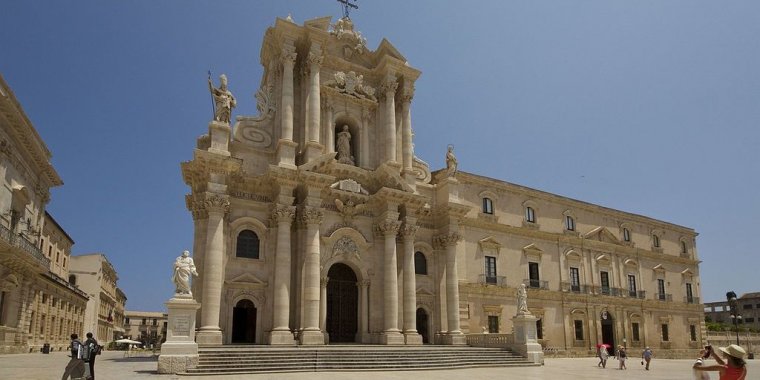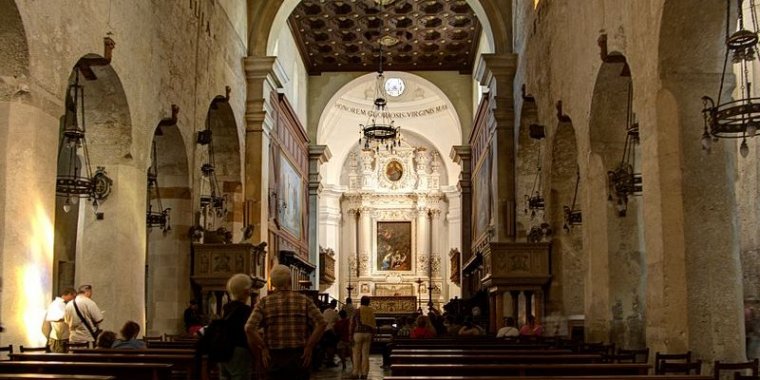| Published in Attractions / Places of Interest |
Cathedral of Syracuse (Duomo di Siracusa), Syracuse, Sicily, Italy
The Cathedral of Syracuse (Duomo di Siracusa), formally the Cattedrale metropolitana della Natività di Maria Santissima, is an ancient Catholic church in Syracuse, Sicily, the seat of the Catholic Archdiocese of Siracusa. Its structure is originally a Greek doric temple, and for this reason it is included in a UNESCO World Heritage Site designated in 2005.
The origins of a temple on this site date to prehistory. The great Greek Temple of Athena was built in the 5th century BC. The temple was a Doric edifice with six columns on the short sides and 14 on the long sides. Plato and Athenaeus mention the temple, and the looting of its ornament is mentioned by Cicero, in 70 BC, as one of the crimes of the governor Verres.
The present cathedral was constructed by Saint Bishop Zosimo of Syracuse in the 7th century. The battered Doric columns of the original temple were incorporated in the walls of the current church. The building was converted into a mosque in 878, then converted back when Norman Roger I of Sicily retook the city in 1085. The roof of the nave is of Norman origin, as well as the mosaics in the apses.
As part of the increased building activity after the 1693 Sicily earthquake, the cathedral was rebuilt and the façade redesigned by architect Andrea Palma in 1725–1753. The style is classified as High Sicilian Baroque, a relatively late example. The double order of Corinthian columns on the facade provide a classic example of carved Acanthus leaves in the capitals. Sculptor Ignazio Marabitti contributed the full-length statues on the facade.
The interior of the church, a nave and two aisles, combine rustic walls and Baroque details. Features include a font with marble basin dating from the 12th or 13th century, a ciborium (an altar canopy) designed by architect Luigi Vanvitelli, and a statue of the Madonna della Neve ("Madonna of the Snow", 1512) by Antonello Gagini.
As of 2015 the cathedral holds a number of relics of St. Lucy, the patroness of the city: a number of bone fragments, a robe, a veil, and a pair of shoes. Twice a year on the first Sunday in May and on December 13, her feast day, a statue of Saint Lucy by sculptor Pietro Rizzo (1599) is brought out of the cathedral and paraded through the streets. The silver statue incorporates three fragments of her ribs within its chest.
Source
• www.wikipedia.org
YOU MAY ALSO LIKE






 If you own or manage a travel-related business such as a hotel, a bed-and-breakfast, a restaurant, a pub or a cafeteria, you can create a web page for your business for free on Titi Tudorancea Travel Info. » |

